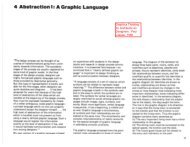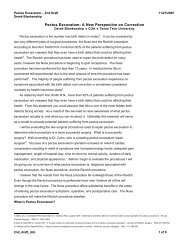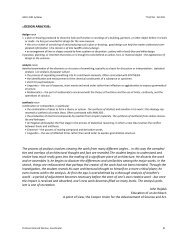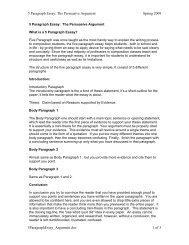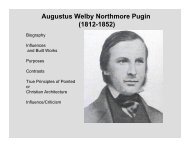The Eyes of the Skin
The Eyes of the Skin
The Eyes of the Skin
Create successful ePaper yourself
Turn your PDF publications into a flip-book with our unique Google optimized e-Paper software.
6THE SUPPRESSION OF VISION - THE FUSION OF VISION AND TACTILITY5In heightened emotional states and deepthought,vision is usually repressed.Rene Magritte, <strong>The</strong> Lovers, 1928. Detail.Richard S. Zeisler Collection, New York.© ADAGP, Paris and DACS, London 2005.6Vision and <strong>the</strong> tactile sense are fused inactual lived experience.Herbert Bayer, <strong>The</strong> Lonely Metropolitan,1932. Detail.© DACS 2005.Cartesian ocularcentric exclamations, <strong>the</strong> hand had a similar fetishisticrole in his work as <strong>the</strong> eye. A vigorous element <strong>of</strong> tactility is present in LeCorbusier's sketches and paintings, and this haptic sensibility is incorporatedinto his regard for architecture. However, <strong>the</strong> reductive biasbecomes devastating in his urban istic projects.In Mies van der Rohe's architecturea frontal perspectival perceptionpredominates, but his unique sense <strong>of</strong> order, structure, weight, detail andcraft decisively enriches <strong>the</strong> visual paradigm. Moreover, an architecturalwork is great precisely because <strong>of</strong> <strong>the</strong> oppositional and contradictory intentionsand allusions it succeeds in fusing toge<strong>the</strong>r. A tension between consciousintentions and unconscious drives is necessary for a work in order toopen up <strong>the</strong> emotional participation<strong>of</strong> <strong>the</strong> observer. 'In every case onemust achieve a simultaneous solution <strong>of</strong> opposites,' as Alvar Aalto wrote. 56<strong>The</strong> verbal statements <strong>of</strong> artists and architects should not usually be takenat <strong>the</strong>ir face value, as <strong>the</strong>y <strong>of</strong>ten merely represent a conscious surface rationalisation,or defence, that may well be in sharp contradictiondeeper unconscious intentions giving <strong>the</strong> work its very life force.with <strong>the</strong>With equal clarity, <strong>the</strong> visual paradigm is <strong>the</strong> prevailing condition incity planning, from <strong>the</strong> idealised town plans <strong>of</strong> <strong>the</strong> Renaissance to <strong>the</strong>Functionalist principles <strong>of</strong> zoning and planning that reflect <strong>the</strong> 'hygiene<strong>of</strong> <strong>the</strong> optical'. In particular, <strong>the</strong> contemporary city is increasingly <strong>the</strong>city <strong>of</strong> <strong>the</strong> eye, detached from <strong>the</strong> body by rapid motorised movement,or through <strong>the</strong> overall aerial grasp from an airplane. <strong>The</strong> processes <strong>of</strong>planning have favoured <strong>the</strong> idealising and disembodiedcontrol and detachment;visions seen through le regard surplombantCartesian eye <strong>of</strong>city plans are highly idealised and schematised(<strong>the</strong> look from above), as definedbyJean Starobinski,57 or through '<strong>the</strong> mind's eye' <strong>of</strong> Plato.Until recently, architectural <strong>the</strong>ory and criticism have been almostexclusively engaged with <strong>the</strong> mechanisms <strong>of</strong> vision and visual expression.<strong>The</strong> perception and experience <strong>of</strong> architectural form has mostfrequently been analysed through <strong>the</strong> gestalt laws <strong>of</strong> visual perception.Educational philosophy has likewise understood architecture primarily28THE EYES OFTHE SKINPART I 29









